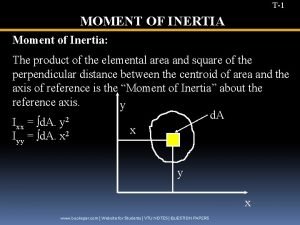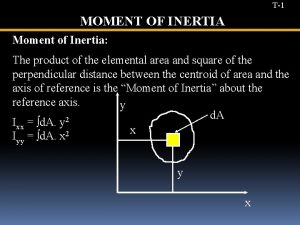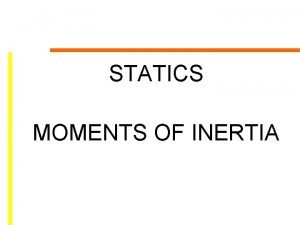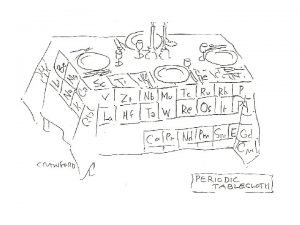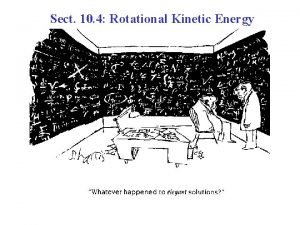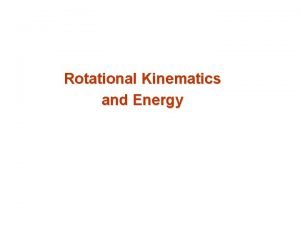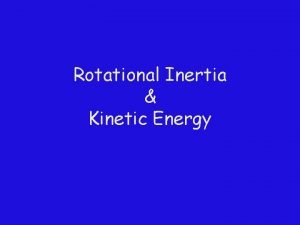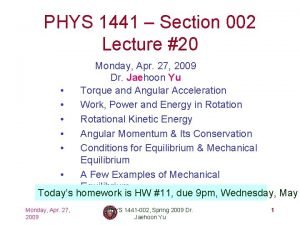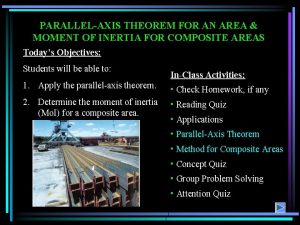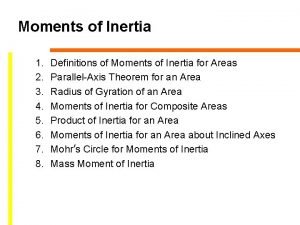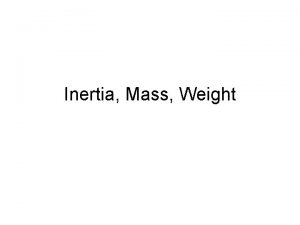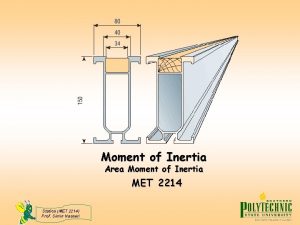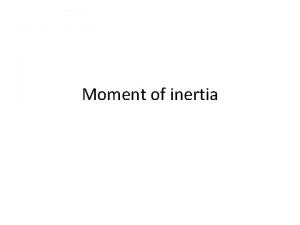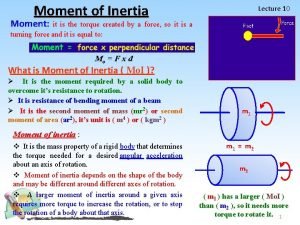Chapter 7 Moment of Inertia Moment of Inertia










- Slides: 10

Chapter 7 Moment of Inertia

Moment of Inertia • A mathematical property of the area that describes the second moment of area about an axis • It describes an object’s resistance to bending to angular rotation

Moment of Inertia of Simple Areas • When an object is subjected to bending, a rotation occurs about some axis in the shape • The axis is referred to as the neutral axis • Note: the black and green bars represent bending forces developed by a beam

Moment of Inertia of Simple Areas (Cont’d) • Ix = y 2 A • Ix = Moment of inertia about the X axis • y = distance from the neutral axis or axis of bending • A = incremental area being considered

Parallel Axis Theorem • Ix = Ixc + Ad 2 or • Iy = Iyc + Ad 2 • Ix, Iy = moment of inertia desired about some parallel x or y axis, respectively

Parallel Axis Theorem (Cont’d) • Ixc, Iyc = moment of inertia about the shape’s centroidal x or y axis, respectively • A = area of shape • d = the perpendicular distance between the axis of interest and the centroidial axis

Moment of Inertia of Composite Areas X Shape # Ixc A d Ad 2 Ix total d Ad 2 Iy total Y Shape # Iyc A

Moment of Inertia of Composite Areas (Cont’d) X Shape # • • Ixc A = area of shape d = distance Ad 2 = Area * distance 2 Ix total = Ix + Ad 2 A d Ad 2 Ix total

Polar Moment of Inertia • The polar moment of inertia for a given shape represents that shape’s resistance to torsion or twisting forces • J = r 2 A • r = radial distance from the longitudinal axis to incremental area • A = incremental unit of area

Radius of Gyration • The relationship between a shape’s moment of inertia and its area
 Horizontal centroidal axis
Horizontal centroidal axis I=bh^3/12
I=bh^3/12 Moment of inertia equation statics
Moment of inertia equation statics Principal axis transformation
Principal axis transformation Inertia of a thin hoop
Inertia of a thin hoop Moment of inertia hoop
Moment of inertia hoop Moment of inertia hoop vs disk
Moment of inertia hoop vs disk Thin walled hollow cylinder moment of inertia
Thin walled hollow cylinder moment of inertia The parallel axis theorem for an area is applied between
The parallel axis theorem for an area is applied between Units of mass moment of inertia
Units of mass moment of inertia Type of moment
Type of moment
